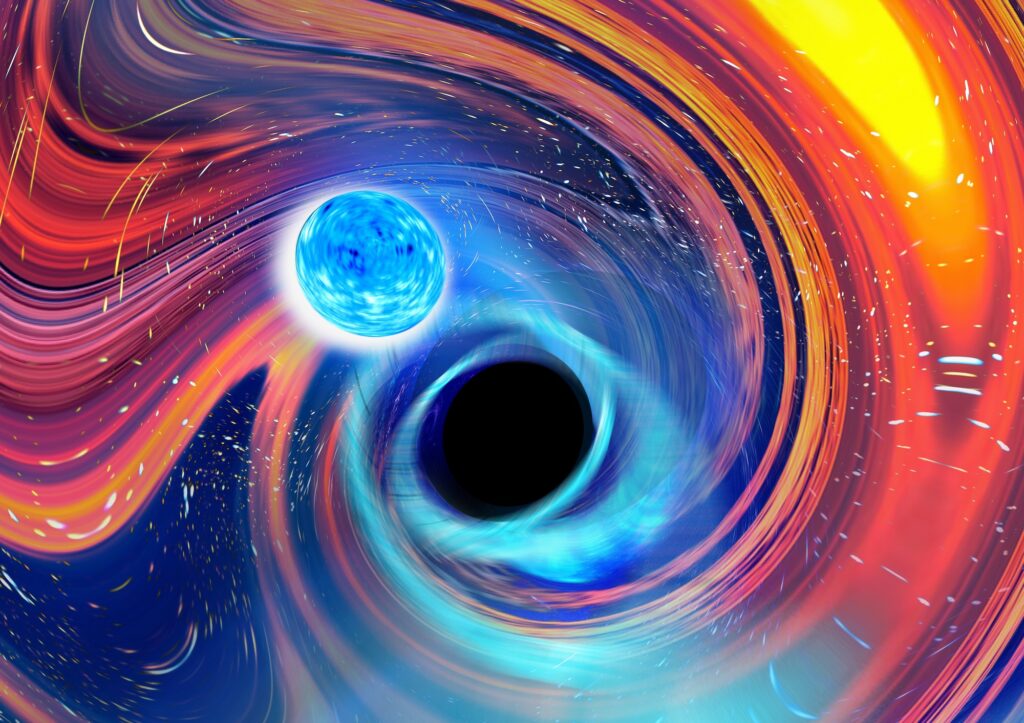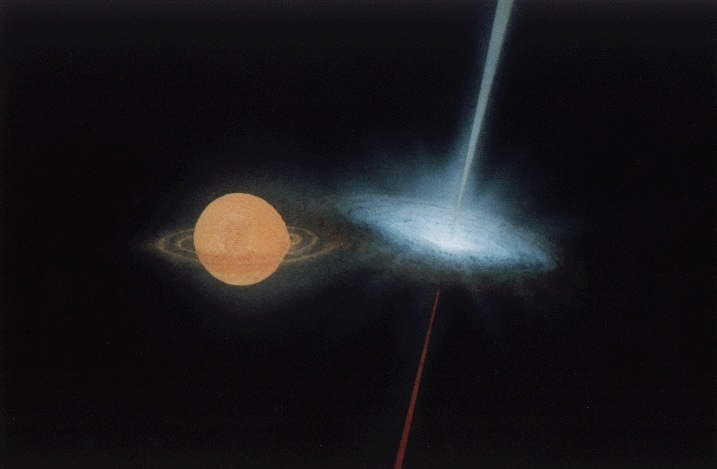Over the last few months, Universe Today has explored a plethora of scientific fields, including impact craters, planetary surfaces, exoplanets, astrobiology, solar physics, comets, planetary atmospheres, planetary geophysics, cosmochemistry, meteorites, radio astronomy, extremophiles, and organic chemistry, and how these various disciplines help scientists and the public better understand our place in the cosmos.
Continue reading “Black Holes: Why study them? What makes them so fascinating?”Hundreds of Massive Stars Have Simply Disappeared

The lifecycle of a star is regularly articulated as formation taking place inside vast clouds of gas and dust and then ending either as a planetary nebula or supernova explosion. In the last 70 years however, there seems to be a number of massive stars that are just disappearing! According to stellar evolution models, they should be exploding as supernova but instead, they just seem to vanish. A team of researchers have studied the behaviour of star VFTS 243 – a main sequence star with a black hole companion – and now believe it, like the others, have just collapsed, imploding into a black hole!
Continue reading “Hundreds of Massive Stars Have Simply Disappeared”After Swirling Around a Black Hole, Matter Just Falls Straight In

The physics surrounding black holes is just plain weird. A gravitational well so strong that not even light can escape can do some pretty strange things to normal matter. Over the decades, plenty of theories have been put forward about what those strange things might be. And now, a new paper from physicists at the University of Oxford has proved that, once again, Einstein’s theory of gravity was right.
Continue reading “After Swirling Around a Black Hole, Matter Just Falls Straight In”Black Holes Can Halt Star Formation in Massive Galaxies

It’s difficult to actually visualise a universe that is changing. Things tend to happen at snails pace albeit with the odd exception. Take the formation of galaxies growing in the early universe. Their immense gravitational field would suck in dust and gas from the local vicinity creating vast collections of stars. In the very centre of these young galaxies, supermassive blackholes would reside turning the galaxy into powerful quasars. A recent survey by the James Webb Space Telescope (JWST) reveals that black holes can create a powerful solar wind that can remove gas from galaxies faster than they can form into stars, shutting off the creation of new stars.
Continue reading “Black Holes Can Halt Star Formation in Massive Galaxies”A Neutron Star Merged with a Surprisingly Light Black Hole
Galactic collisions, meteor impacts and even stellar mergers are not uncommon events. neutron stars colliding with black holes however are a little more rare, in fact, until now, we have never observed one. The fourth LIGO-Virgo-KAGRA observing detected gravitational waves from a collision between a black hole and neutron star 650 million light years away. The black hole was tiny though with a mass between 2.5 to 4.5 times that of the Sun.
Continue reading “A Neutron Star Merged with a Surprisingly Light Black Hole”Black Holes are Tearing Stars Apart All Around Us
Galaxy NGC3799 lies around 16 million light years from Earth. Any event observed today within that galaxy took place 16 million years ago. One such event was observed in February 2023 when a surge in brightness in the core was followed by a rapid dimming. The observations that followed revealed that the event was a star being torn apart by a supermassive black hole at the heart of the galaxy. This is not the first time such an event has been observed but it is the first to be within our galactic backyard suggesting it may be more common that first thought.
Continue reading “Black Holes are Tearing Stars Apart All Around Us”Astronomers Find the Most Massive Pair of Supermassive Black Holes Ever Seen
Supermassive black holes have been found at the heart of most galaxies but understanding how they have formed has eluded astronomers for some time. One of the most popular theories suggests they merge over and over again to form larger black holes. A recent discovery may support this however the pair of supermassive black holes are orbiting 24 light years apart and measure an incredible 28 billion solar masses making it the heaviest ever seen.
Continue reading “Astronomers Find the Most Massive Pair of Supermassive Black Holes Ever Seen”What are the Differences Between Quasars and Microquasars?
Quasars are fascinating objects; supermassive black holes that are actively feasting on material from their accretion disks. The result is a jet that can outshine the combined light from the entire galaxy! There are smaller blackholes too that are the result of the death of stars and these also sometimes seem to host accretion disks and jets just like their larger cousins. We call these microquasars and, whilst there are similarities between them, there are differences too.
Continue reading “What are the Differences Between Quasars and Microquasars?”Astronomers Watched a Massive Star Just… Disappear. Now JWST Might Have Some Answers

In 2009 a giant star 25 times more massive than the Sun simply…vanished. Okay, it wasn’t quite that simple. It underwent a period of brightening, increasing in luminosity to a million Suns, just as if it was ready to explode into a supernova. But then it faded rather than exploding. And when astronomers tried to see the star, using the Large Binocular Telescope (LBT), Hubble, and the Spitzer space telescope, they couldn’t see anything.
The star, known as N6946-BH1, is now considered a failed supernova. The BH1 in its name is due to the fact that astronomers think the star collapsed to become a black hole rather than triggering a supernova. But that has been conjecture. All we’ve known for sure is that it brightened for a time then grew too dim for our telescopes to observe. But that has changed, thanks to the James Webb Space Telescope (JWST).
Continue reading “Astronomers Watched a Massive Star Just… Disappear. Now JWST Might Have Some Answers”A Tadpole-Shaped Cloud of Gas is Whirling Around a Black Hole

In the 1930s, astrophysicists theorized that at the end of their life cycle, particularly massive stars would collapse, leaving behind remnants of infinite mass and density. As a proposed resolution to Einstein’s field equations (for his Theory of General Relativity), these objects came to be known as “black holes” because nothing (even light) could escape them. By the 1960s, astronomers began to infer the existence of these objects based on the observable effects they have on neighboring objects and their surrounding environment.
Despite improvements in instruments and interferometry (which led to the first images of M87 and Sagittarius A*), the study of black holes still relies on indirect methods. In a recent study, a team of Japanese researchers identified an unusual cloud of gas that appears to have been elongated by a massive, compact object that it orbits. Since there are no massive stars in its vicinity, they theorize that the cloud (nicknamed the “Tadpole” because of its shape) orbits a black hole roughly 27,000 light-years away in the constellation Sagittarius.
Continue reading “A Tadpole-Shaped Cloud of Gas is Whirling Around a Black Hole”




